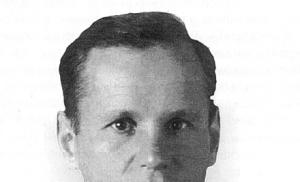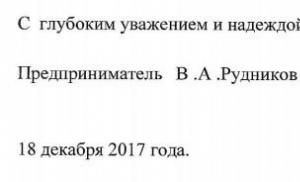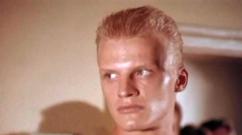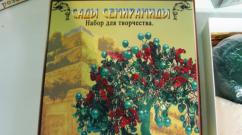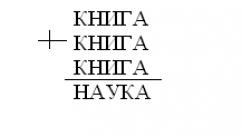"Vitruvian Man": engineering project or high art. Leonardo Da Vinci
Leonardo da Vinci. Self-portrait. 1514 - 1516
The Vitruvian Man is a drawing made by Leonardo Da Vinci around 1490-92 as an illustration for a book dedicated to the writings of Vitruvius. The drawing is accompanied by explanatory inscriptions in one of his journals.. It depicts the figure of a naked man in two superimposed positions: with arms spread apart, describing a circle and a square.
Drawing and text are sometimes referred to as canonical proportions. When examining the drawing, it can be seen that the combination of arms and legs actually amounts to four different postures. A pose with arms spread apart and legs not spread apart fits into a square ("Square of the Ancients"). On the other hand, a pose with arms and legs spread out to the sides fits into a circle. And, although, when changing positions, it seems that the center of the figure is moving, in fact, the navel of the figure, which is its real center, remains motionless.
"Vetruvio architetto mette nelle sue opera d" architettura che le misure dell "omo…"."The architect Vetruvius laid the dimensions of man in his architecture ...". Further goes description relationships between various parts human body.
In the accompanying notes, Leonardo da Vinci indicated that the drawing was created to study the proportions of the (male) human body, as described in the treatises of the ancient Roman architect Vitruvius, who wrote the following about the human body:
"Nature disposed of the following proportions in the structure of the human body:
the length of four fingers is equal to the length of the palm,
four palms are equal to a foot,
six hands make one cubit,
four cubits is the height of a man.
Four cubits are equal to a step, and twenty-four palms are equal to the height of a man.
If you spread your legs so that the distance between them is 1/14 of a human height, and raise your hands so that the middle fingers are at the level of the top of the head, then the center point of the body, equidistant from all limbs, will be your navel.
The space between the legs apart and the floor forms an equilateral triangle.
The length of the outstretched arms will be equal to the height.
The distance from the roots of the hair to the tip of the chin is equal to one tenth of human height.
The distance from the top of the chest to the top of the head is 1/6 of the height.
The distance from the upper chest to the roots of the hair is 1/7.
The distance from the nipples to the crown is exactly a quarter of the height.
The greatest shoulder width is an eighth of the height.
The distance from the elbow to the fingertips is 1/5 of the height, from the elbow to the armpit - 1/8.
The length of the entire arm is 1/10 of the height.
The beginning of the genitals is located just in the middle of the body.
The foot is 1/7 of the height.
The distance from the toe of the foot to the patella is equal to a quarter of the height, and the distance from the patella to the beginning of the genitals is also equal to a quarter of the height.
The distance from the tip of the chin to the nose and from the roots of the hair to the eyebrows will be the same and, like the length of the ear, equal to 1/3 of the face.

The rediscovery of the mathematical proportions of the human body in the 15th century by Leonardo da Vinci and others was one of the great achievements that preceded Italian Renaissance. The drawing itself is often used as an implicit symbol of the internal symmetry of the human body.
Art is inherent in the desire for harmony, proportion, harmony. We find them in the proportions of architecture and sculpture, in the arrangement of objects and figures, in the combination of colors in painting, in the alternation of rhymes and rhythm in poetry, in the sequence musical sounds. These properties are not invented by people. They reflect the properties of nature itself. One of the proportions is most often found in art. She got the title golden ratio". The golden ratio was known in antiquity. So in book II of Euclid's "Beginnings" it is used in the construction of pentagons and decagons.
The term "golden ratio" was introduced by Leonardo da Vinci. If we tie a human figure - the most perfect creation of the universe - with a belt and then measure the distance from the belt to the feet, then this value will refer to the distance from the same belt to the top of the head, as the entire height of a person relates to the length from the belt to the feet ...
Indeed, in nature and the human body there are many proportional relationships close to what Leonardo da Vinci called the golden section. Although not embodying it exactly. By the way, the golden ratio, which is preferred in many cases, is not the only ratio that is visually perceived as beautiful. These include relationships such as 1:2, 1:3. They are close to the golden ratio. In any work of art, several unequal, but close to the golden section, parts give the impression of the development of forms, their dynamics, proportional addition to each other. In particular, the ratio based on the golden ratio is most common in the construction of monuments.
Is it possible to talk about the golden ratio in music? It is possible if you measure musical composition by the time of its execution. In music, the golden ratio reflects the peculiarities of human perception of time proportions. The point of the golden section serves as a guide for shaping (especially in short essays), often it has a climax. It may also be the most bright moment or the quietest, densest place in terms of texture or the highest pitch. But it also happens that a new musical theme appears at the point of the golden section.
Vitruvian Man - that's what it's called graphic image naked man in the famous sketch by Leonardo da Vinci. It has been studied for centuries. However, scientists are sure that not all the secrets of the drawing have been revealed yet.
Leonardo da Vinci: Vitruvian Man (Academic Gallery, Venice, Italy)
Being one of the most mysterious and controversial figures of his era, Leonardo da Vinci left behind many secrets. Their meaning still disturbs the scientific minds of the whole world. One of these mysteries is the Vitruvian Man, a pencil sketch of which has been carefully preserved for centuries. And although a lot is known about him, but experts in the field of art are sure that great discoveries are yet to come.
Vitruvian Man is official name sketch by Leonardo. It was made by him in 1492 and was intended to illustrate a handwritten book. The drawing represents a naked man whose body is inscribed in a circle and a square. In addition, the image has a duality - the human body is depicted in two poses superimposed on each other.
As you can see when examining the drawing, the combination of arm and leg positions actually results in two different positions. A pose with arms spread apart and legs brought together turns out to be inscribed in a square. On the other hand, the pose with arms and legs spread out to the sides is inscribed in a circle. On closer examination, it turns out that the center of the circle is the navel of the figure, and the center of the square is the genitals.
Da Vinci's diary, for which the drawing was intended, is called the Canon of Proportions. The fact is that the artist believed in a certain number "phi", calling it divine. He was sure of the presence of this number in everything created in wildlife. However, da Vinci tried to achieve the “divine proportion” he had deduced in architecture. But this remained one of the unrealized ideas of Leonardo. But the Vitruvian Man is fully depicted in accordance with "phi", that is, in the figure - a model of an ideal creature.
According to Leonardo's accompanying notes, it was created to determine the proportions of the (male) human body, as described in the treatises of the ancient Roman architect Vitruvius; to which Leonardo wrote the following explanations:
- the length from the tip of the longest to the lowest base of the four fingers is equal to the palm
- foot is four palms
- a cubit is six palms
- the height of a person is four cubits from the tips of the fingers (and, accordingly, 24 palms)
- step equals four palms
- scope human hands equal to his height
- the distance from the hairline to the chin is 1/10 of its height
- the distance from the crown to the chin is 1/8 of its height
- the distance from the crown to the nipples is 1/4 of its height
- the maximum width of the shoulders is 1/4 of its height
- the distance from the elbow to the tip of the arm is 1/4 of its height
- the distance from the elbow to the armpit is 1/8 of its height
- arm length is 2/5 of its height
- the distance from the chin to the nose is 1/3 of the length of his face
- the distance from the hairline to the eyebrows is 1/3 of the length of his face
- ear length 1/3 face length
- the navel is the center of the circle
The rediscovery of the mathematical proportions of the human body in the 15th century by da Vinci and others was one of the great achievements that preceded the Italian Renaissance.
Subsequently, according to the same methodology, Corbusier compiled his own proportioning scale - Modulor, which influenced the aesthetics of architecture of the 20th century.
The drawing appeared as a result of studying Italian master works of Vitruvius - an outstanding architect ancient rome. In his treatises, the human body was identified with architecture. However, denying this idea, da Vinci developed the idea of the union of three elements in man - art, science and divine principles, that is, a reflection of the Universe.
In addition to a deep philosophical message, the Vitruvian man also has a certain symbolic meaning. The square is interpreted as material sphere, circle - spiritual. The contact of the figures with the body of the depicted person is a kind of intersection in the center of the universe.
On the this moment the sketch is kept in the Venice Museum. There is no free access to the relic - the exhibit is exhibited extremely rarely. Those who wish have the opportunity to look at it once every six months, since moving and being in direct light are detrimental to the manuscript, which is almost 500 years old. Most of the da Vinci structures made according to sketches have survived to this day. Those who wish can see the old projects and their current incarnation in Milan, in the Museum of Science of Leonardo da Vinci, located near the Sant'Ambrogio metro station.
Interesting Facts:
- The drawing itself is often used as an implicit symbol of the internal symmetry of the human body and, further, of the Universe as a whole.
- In 2011, Irish aerial artist John Quigley painted a giant copy of the famous Vitruvian Man painting on the ice of the Arctic Ocean in order to draw the attention of mankind to the problems of ecological balance.
- In 2012, reports were published that the first visual image of the “Vitruvian Man” was drawn not by Leonardo, but by his friend Giacomo Andrea da Ferrara, who studied the works of Vitruvius in detail, although his drawing is disproportionately inferior to Leonardo’s drawing in terms of artistic merit.
Sketch vitruvian man was discovered by chance, in the manuscripts of Leonardo. It was created approximately in 1490-1492
When a sketch was found, next to it were the artist's notes regarding the proportions of a person:
"The architect Vitruvius states in his work on architecture that the measurements of the human body are distributed according to the following principle: the width of 4 fingers is equal to 1 palm, the foot is 4 palms, the elbow is 6 palms, full height a person - 4 cubits or 24 palms ... Vitruvius used the same measurements in the construction of his buildings ".
Da Vinci's "Vitruvian Man" was based on treatise "Man Equilibre" by the architect of Ancient Rome Vitruvius, whose name the image of the figure is named. This ancient roman used the proportions of the human body for his studies in architecture.
In their mathematical studies, Vitruvius and Leonardo described not only the proportions of a person, but also the proportions of all creation. In a notebook of 1492, Leonardo's entry was found: "Ancient Human was the world in miniature. Since man is made up of earth, water, air and fire, his body resembles microcosm of the universe".
In our modern world, Da Vinci's drawing is no longer perceived by mankind as a symbol ideal proportions human, in particular male body. This image rather symbolizes finding man in the universe.
Vitruvian Man by Leonardo Da Vinci it is an image of the agreed state of life, in the center of which is a person. The figure shows the ideal male figure in terms of proportions.
In the image of the "Vitruvian Man" it is customary to see two bodies - two figures, one of which fits into a circle, and the other into a square.
The interpretation of such a composition is next value:
The square is a symbol of the earthly, material. The center of the square is in the groin area.
The circle is a symbol of the divine, including the divine origin of man. The figure in the circle does not contain dashes, that is, it is not measured. Since, as a divine phenomenon, this figure cannot be measured. The center of the circle is the human navel.
Two positions - in a circle and a square in the figure - display dynamics and peace. Thus, great artist conveys the inconsistency of the spirit - a circle, and matter - a square. If you supplement the drawing with sides Quadruplets of Heidegger, then it will work symbolic image the true state of man half divine, half mortal which rests its feet on the Earth and rests its head in Heaven.
This is seen as a symbol of the fact that a person gravitates towards the earthly, despite his divine component.
Vitruvian Man is not only hidden symbol internal symmetry of the human body, but also a symbol of the symmetry of the universe as a whole.
In proportions, the volume of a circle and the volume of a square are absolutely equal. This shows that the manifested (material) and unmanifested (spiritual) - mutual states. The difference is only in frequency.
Why the spiritual materializes is another no less interesting question.
By modern ideas, to see only two figures in the "Vitruvian Man" is too simple and flat.
The great genius saw and tried to pass on to other generations deep meaning seen by him in our nature. In this way, he wanted to show us the meaning of the "golden section". The image of the Vitruvian man is the encrypted "golden section".
So the ancient scientists are trying to convey to us the meaning of Supreme Harmony.
One more famous creation, in which Leonardo da Vinci displayed the golden ratio - "Mona Lisa". Her enigmatic smile incredibly captivates millions of contemplators.
There is one more interesting theory , according to which Da Vinci's Vitruvian man is an image of Christ. The artist was engaged in the restoration of the Shroud at the request of its keepers. Allegedly inspired by the image of Christ on the shrine, he transfers the impeccable proportions of his body to his drawing. So, it depicts the divine proportions of the human body. Da Vinci, placing the male figure in the center of the universe, depicted man in the image of God.
"Vitruvian Man"- the most famous painting by Leonardo da Vinci after the Mona Lisa. Everyone must have seen it.
The Vitruvian Man is the name of the graphic image of a naked man in the famous sketch by Leonardo da Vinci. It has been studied for centuries. However, scientists are sure that not all the secrets of the drawing have been revealed yet.
Da Vinci studied the treatise of Vitruvius, the Roman architect of the 1st century BC, "Ten Books on Architecture" and based on Vitruvius' considerations on the proportions of the human body contained in it, he made this sketch. The drawing illustrates the anatomical relationships proposed by Vitruvius, but da Vinci adds, of course, something of his own.
According to Leonardo's accompanying notes, it was created to determine the proportions of the (male) human body, as described in the treatises of the ancient Roman architect Vitruvius; to which Leonardo wrote the following explanations:
· the length from the tip of the longest to the lowest base of the four fingers is equal to the palm
· foot is four palms
· a cubit is six palms
· the height of a person is four cubits from the tips of the fingers (and, accordingly, 24 palms)
· step equals four palms
· the span of human hands is equal to its height
etc.
In addition to a deep philosophical message, the Vitruvian Man also has a certain symbolic meaning.
It is known that da Vinci considered the human body as a reflection of the universe, i.e. was convinced that it functions according to the same laws. The author himself considered the Vitruvian Man as " cosmography of the microcosm».
The figure shows a person in two guises: one position - with legs and arms spread apart - inscribed in a circle, the second - with spread arms and legs brought together - inscribed in a square.
The circle has both protective and divine meanings. The circle is a collection, perfection, unity, eternity, a symbol of completeness and completeness, an object that embodies harmony, the most universal of all geometric shapes.

Square - a kind of emblematic image of the four cardinal points. It is a symbol of constancy, security, balance, divine participation in the creation of the world, proportionality, moral aspirations and honest intentions.

The square is interpreted as the material sphere, the circle - the spiritual. The contact of the figures with the body of the depicted person is a kind of intersection in the center of the universe.
A close examination of the drawing reveals four clearly marked positions of the human body and two composition dominant. The first is the center of the figure located in a circle, this is the “navel” of a person, as a symbol of birth. The second - the center of the body, placed in a square, falls on the genitals and serves as a symbol of procreation.
But if you look closely, this drawing carries so much meaning that the story about it is enough for many articles.
- First of all- the combination of arms and legs actually gives not two poses, and not even four. There are more of them, and anyone who is interested can count them.
- Secondly- only a figure in a square, tied to the earth, to the material (microcosm), has measuring lines across the limbs. The figure in the circle, speaking of the divinity of the origin of man, is devoid of lines, that is, it is not measured (and cannot be measured by definition), the macrocosm.
- Thirdly, the figure in the circle "stands" tightly on the bottom line of the square, violating the boundaries of its existence, the circle. Quite a bit, but breaking. Leonardo simply adored such hints. Small but talking. I think, in this case, those who say that no matter how close a Man is to God, he still remains standing on Earth.
But the very "golden section" that in mathematics describes the harmony and perfection of our world is quite harmoniously attached to this picture.

The great Leonardo possessed Knowledge. Where they came from is another question. But it was at the time when he painted the Vitruvian Man that he was engaged in restoration Shroud of Turin. Both of these images match perfectly in all proportions (meaning the figure standing on the bottom line of the square).
Being one of the most mysterious and controversial figures of his era, Leonardo da Vinci left behind many secrets. Their meaning still disturbs the scientific minds of the whole world.
Good day, dear readers! Probably, there is no such person on the planet who would not have heard anything about Leonardo da Vinci. Each of us has some knowledge about this great Italian, but a small number understand the whole genius of this man. This is due, first of all, to the fact that even qualified scientists from all over the world have not solved all the secrets and mysteries of his works. This applies not only to famous paintings depicting the Mona Lisa or the Last Supper, but also a small sketch of the Vitruvian Man.
The Mystery Man and his masterpieces
Examination of a naked man on one of the sheets notebook Leonardo has occupied great minds for several centuries. What does this creation mean? What meaning does it carry? What did the author want to express and say in this way? What is the name of this scheme? There are a lot of questions about the works of da Vinci, but only a few of them can be answered unambiguously.
It is worth noting that Leonardo da Vinci was not only a sculptor and architect, but also an inventor, engineer, writer, musician and scientist.
There is no such field of knowledge High Renaissance who would not be interested this person. That is why he was able to create masterpieces, the clues to which have not yet been found to this day.
One of the most mysterious and interesting works Leonardo da Vinci The Man in the Circle was created over 5 centuries ago - in 1490-1492.

It was dedicated to the works of no less famous and great master more early eras- Vitruvius. Among the less esoteric titles this figure the names "Canon of proportions" and "Proportions of a man" can be distinguished.
The ancient Roman architect Vitruvius designed and built all his structures based on the proportions of the human body. He found quite a lot of regularities with which God endowed the organisms of earthly creatures. That is why he created the treatise "Ten Books on Architecture", in which he summarized in Latin the knowledge available at that time in the field of construction.
It is far from always immediately clear how many figures are actually depicted in Leonardo's sketch. Therefore, before proceeding to the analysis this work, should be considered carefully. Maybe some of the readers will be able to see something there that no one has noticed yet. Very often the answer to the most complex problems of mankind lies on the surface, but no one pays attention to it. How many shapes do you see in the picture above?
Vitruvian Man Questions and Answers
Proportions at one time interested Leonardo, so he began work on creating his "ideal" person. There is a theory that the Vitruvian Man that has come down to us is not the only version of the famous Renaissance master. This is due to the fact that in order to determine all the sizes and relationships between them, it would be necessary to draw several sketches, as well as carefully analyze them. But is it really so? Will the public be able to find other works by Leonardo? Will these findings help answer existing questions, or will they only lead researchers into yet another dead end?
As italian painter not the only one interested in the works of Vitruvius, many scholars suggest that before drawing his man in a circle, he studied other similar drawings. It is on the basis of this theory that a similar depiction by Giacomo Andrea de Ferarra, less artistically but also quite accurately, dates back to an older period of creation. Therefore, some art critics are sure that Leonardo only improved the achievements of his colleague, giving them a final and flawless look.
Man , inscribed in a square and a circle haunts many researchers. Over many decades, they have discovered more than 15 patterns and proportions, which are shown in this sketch. No less important, besides the drawing itself, is the annotation made by Leonardo himself under it. It is in it that these patterns are described that the artist wanted to depict. You can feel like a real Renaissance scientist not by reading the studies of other scientists, but by discovering them yourself. Agree, it is quite exciting and does not require additional costs. Particularly passionate about proportionality, people can portray their man da Vinci. But before you draw it, you should carefully study the material known from it.
What is the meaning of the person in the circle?
At the heart of the whole image, which for five centuries has become a symbol of its era, is the golden ratio.

This concept reflects the structural harmony of nature and the universe as a whole, as well as man as a part of it. The special ratio of one parameter to another acts outside of space and time, as if being at the basis of the whole world. Many see it as a cosmic order, an esoteric manifestation, a supernatural incarnation, or a strict mathematical sequence. It is up to everyone to decide for themselves what to consider an unusual proportion, but the only undeniable fact is that it is present in the Vitruvian Man.
If you look carefully at the seemingly ordinary drawings of a naked man superimposed on each other, you can see 16 different poses. This testifies in favor of the assumption that the longer you peer into Leonardo's man, the more you can discover for yourself.
Some researchers believe that the great creator of the Renaissance depicted not some ideal assembled image, but himself. That is, it is possible that Leonardo's man is Leonardo himself, which only further fuels interest in researching the phenomenon of this sketch. The full meaning of the picture is most likely still long time will be incomprehensible, but it is necessary to make attempts to deepen it. Perhaps it contains some answers to the problems modern society, or secret knowledge hidden from modern world its superficiality and inability to fully penetrate with all its essence into the study of global issues.
Maybe it's just a drawing
Although the drawing can only be regular sketch, hiding virtually nothing behind itself, very many refuse to believe in it. This is primarily due to the fact that Leonardo did not create any of his masterpieces, in which secret messages and meanings would not be hidden.
AT given time the original work of the High Renaissance is very difficult to see, if not unrealistic. It is located in Venice, in the Accademia Gallery. Although there are so many of his photos and copies that this does not prevent anyone from touching the art of secrets and mysteries a little. It is worth noting that modern interpretations of the da Vinci man, performed by famous artists, are also gradually gaining popularity against the backdrop of the resonance that creates a true work.
AT popular culture the work of the Renaissance gradually also got - a tattoo with the image of a da Vinci man has already been on the body of many thousands of people.

Maybe some of the readers of this article also want to join the cult, created through its mystery. Who knows what the Vinci man was hiding in himself, and how his image on the body can change life and fate?
Subscribe to and invite your friends. All the most interesting materials here just for you! See you soon.
Text agent Q.
In contact with

